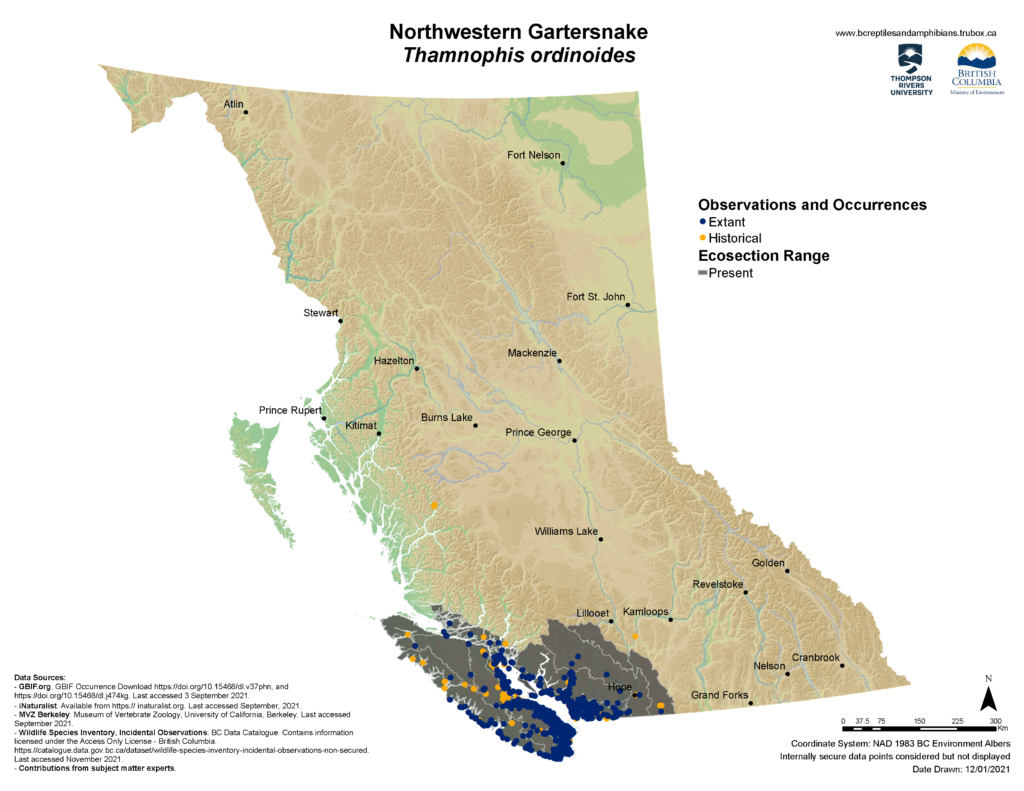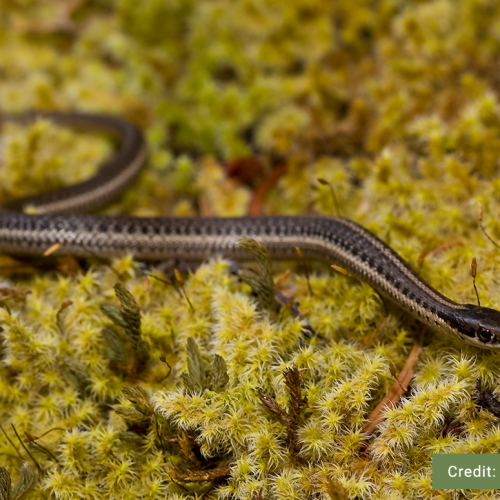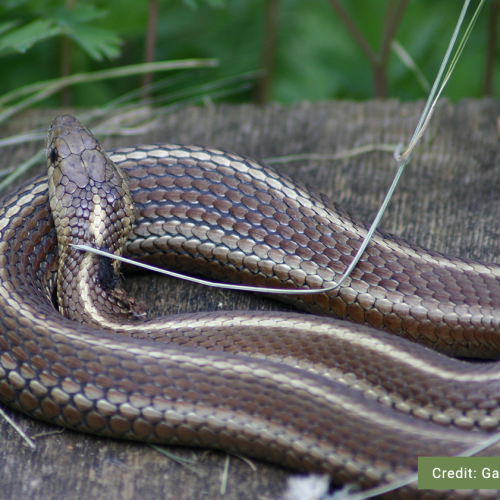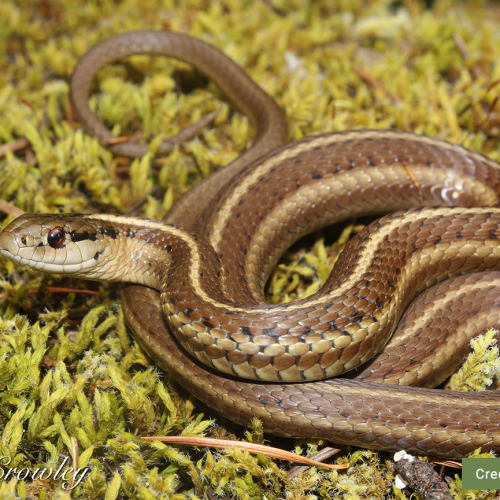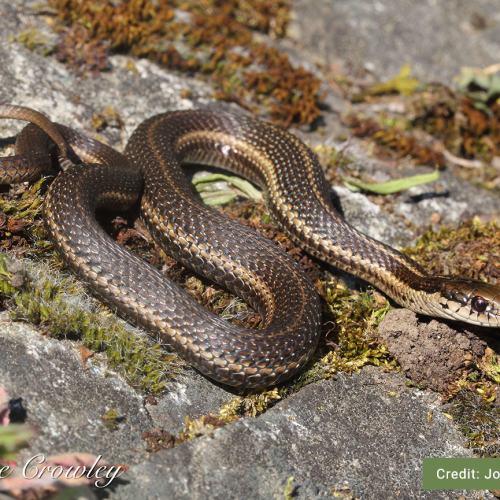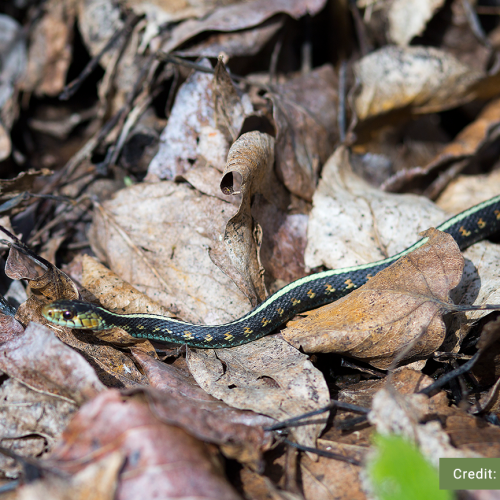Credit: Joe Crowley
Northwestern Gartersnake
Thamnophis ordinoides
Description
Listen to the Indigenous words for “gartersnake” here!

Similar Species
The Northwestern Gartersnake may be easily confused with the Common Gartersnake and the Western Terrestrial Gartersnake. The Common Gartersnake is generally much larger, more likely to be black in background colour, and will often have red barring on the sides between the dorsalDefinition:Relating to the top or back. and lateralDefinition:Relating to the sides or flanks. stripes. The Western Terrestrial Gartersnake typically has 8 scales on the upper lip, two of them enlarged, and black spots that overlap with the dorsal stripe.
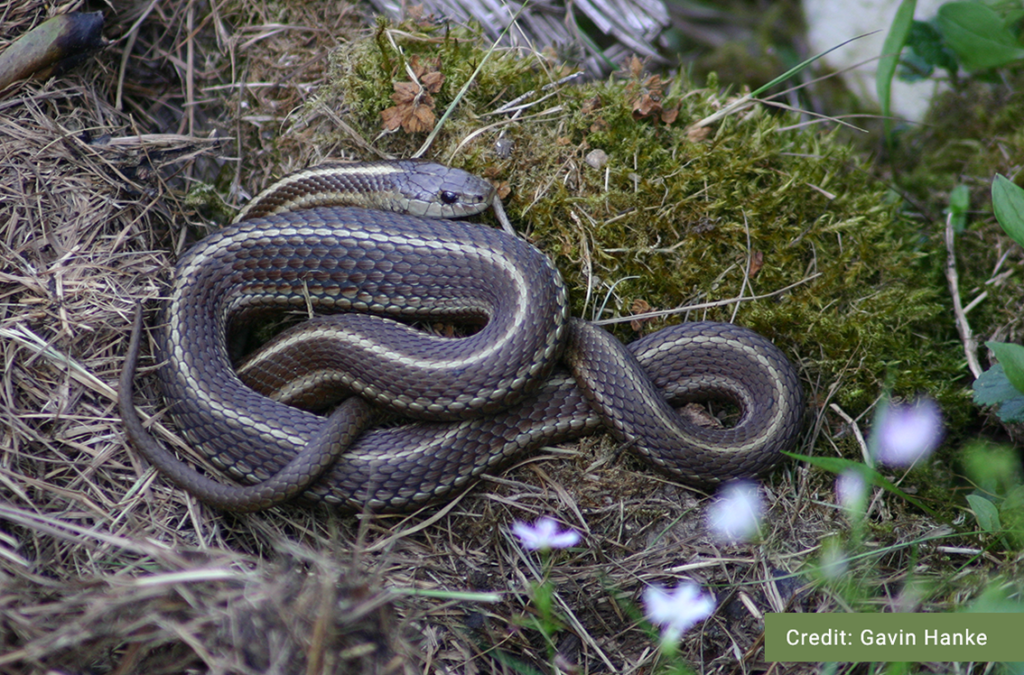
Northwestern Gartersnake
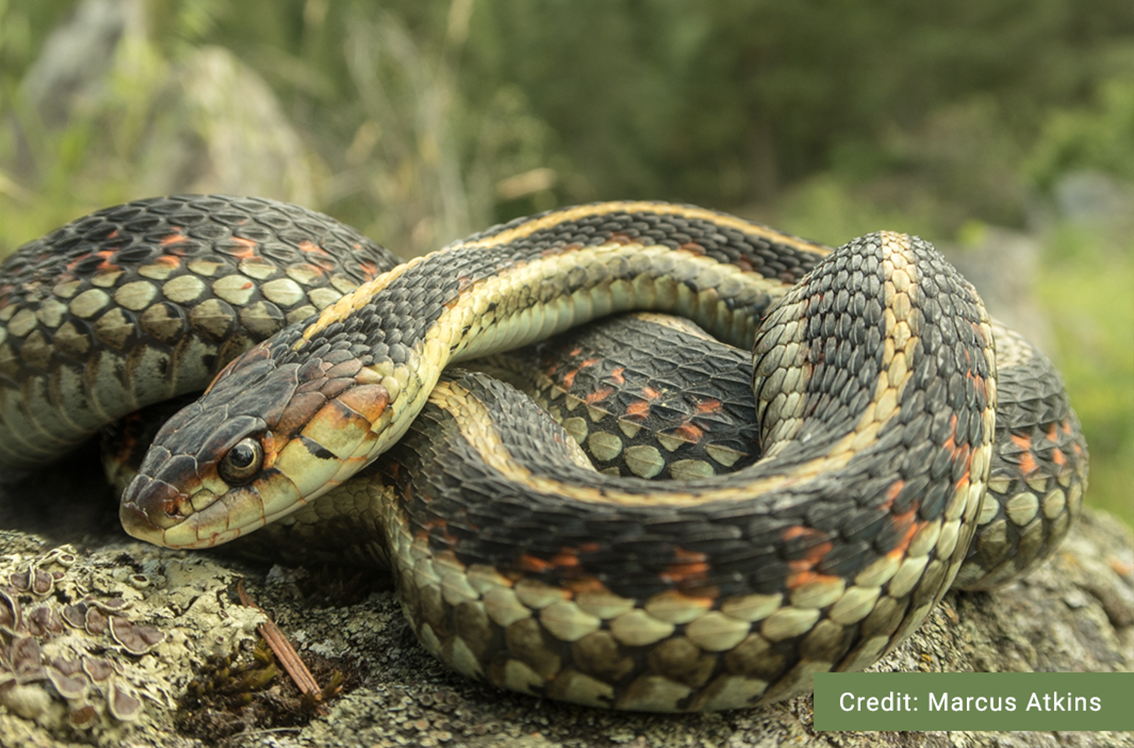
Common Gartersnake
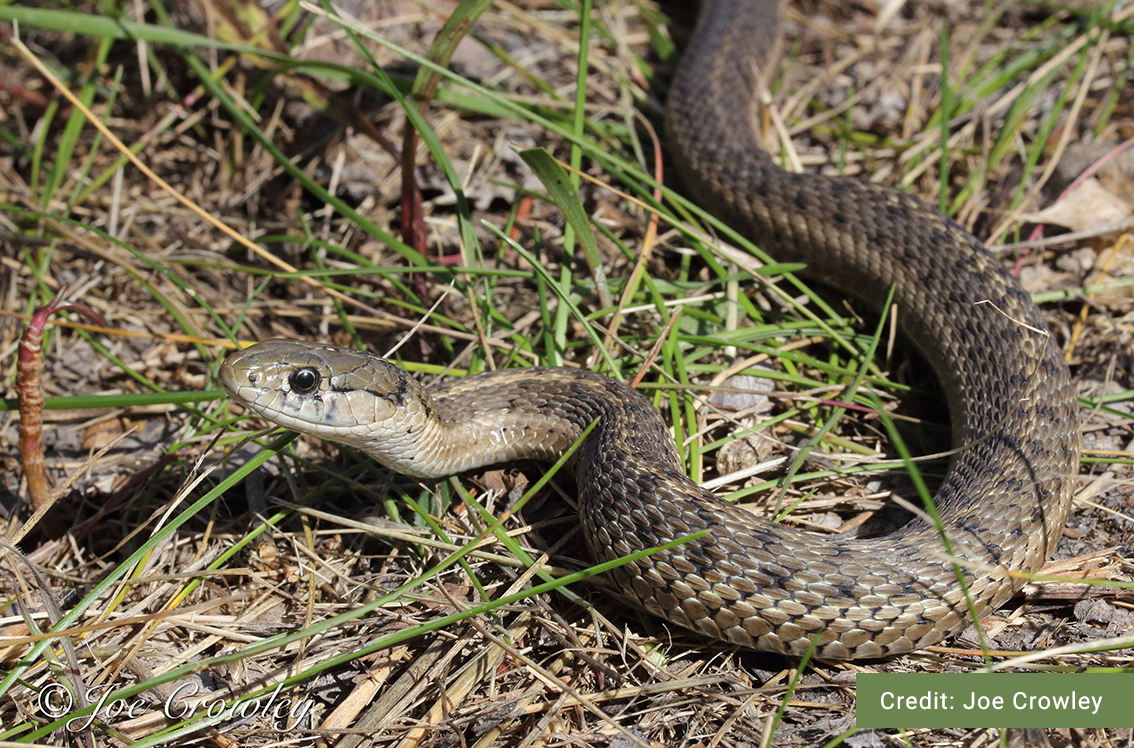
Western Terrestrial Gartersnake
Distribution
Habitat
Reproduction
Northwestern Gartersnakes typically mate in the spring, very shortly after they emerge from hibernationDefinition:Term to describe a period of dormancy in animals, usually as a response to low external temperatures during which most metabolic processes are slowed, including respiration and thermoregulations.. Northwestern Gartersnakes are ovoviviparousDefinition:A reproductive strategy where eggs develop and hatch inside the mother’s body, with the young feeding off the yolk sac until shortly after birth.. The Northwestern Gartersnake has not been studied as heavily as the other Gartersnake species; thus, their mating habits are still largely a mystery. Females will give birth to anywhere from 3-20 young, depending on their size, in summer or early autumn. NeonatalDefinition:A newborn. snakes are very small, ranging from 11-15 cm. Females may breed every year if healthy and well-fed, or every other year or every third year if in poor condition. Northwestern Gartersnakes can live for more than 20 years.
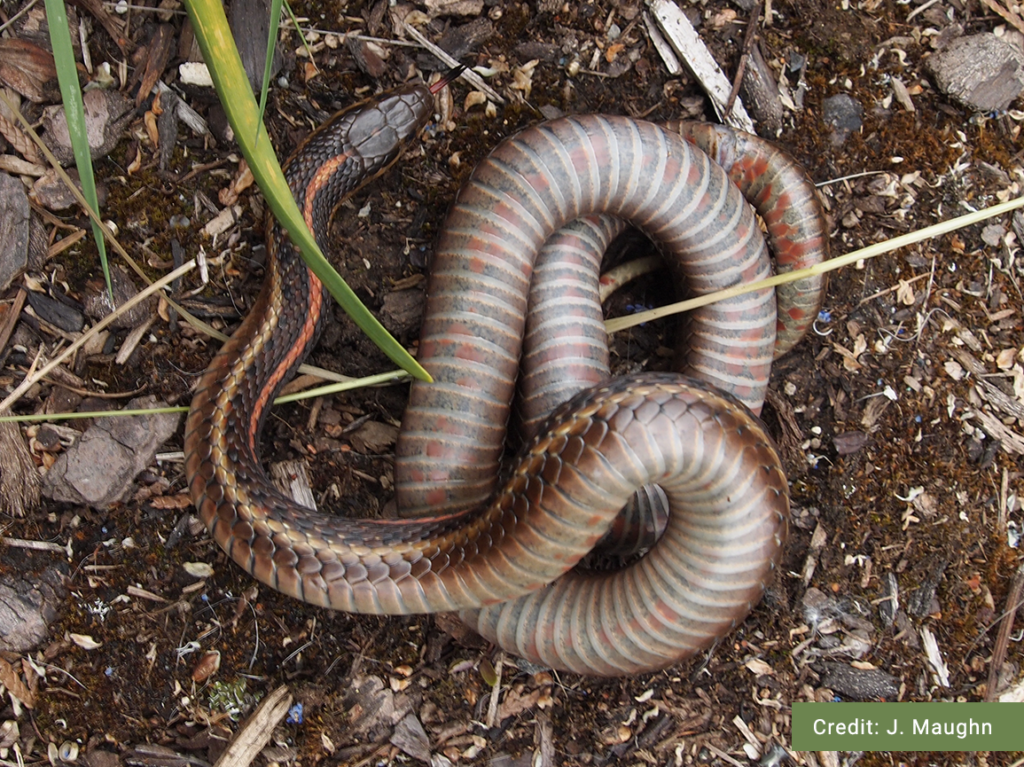
Diet
Northwestern Gartersnakes are primarily diurnalDefinition:Active during the day. foragers, though they are generally “lazier” than the other Gartersnake species. However, the Northwestern Gartersnake does not need to be a particularly speedy hunter, as their favourite prey items are notoriously slow! Their favourite foods are slugs, earthworms, snails, and small amphibians. Once adults are large enough, they are particularly fond of eggs and will eat any eggs they can find.
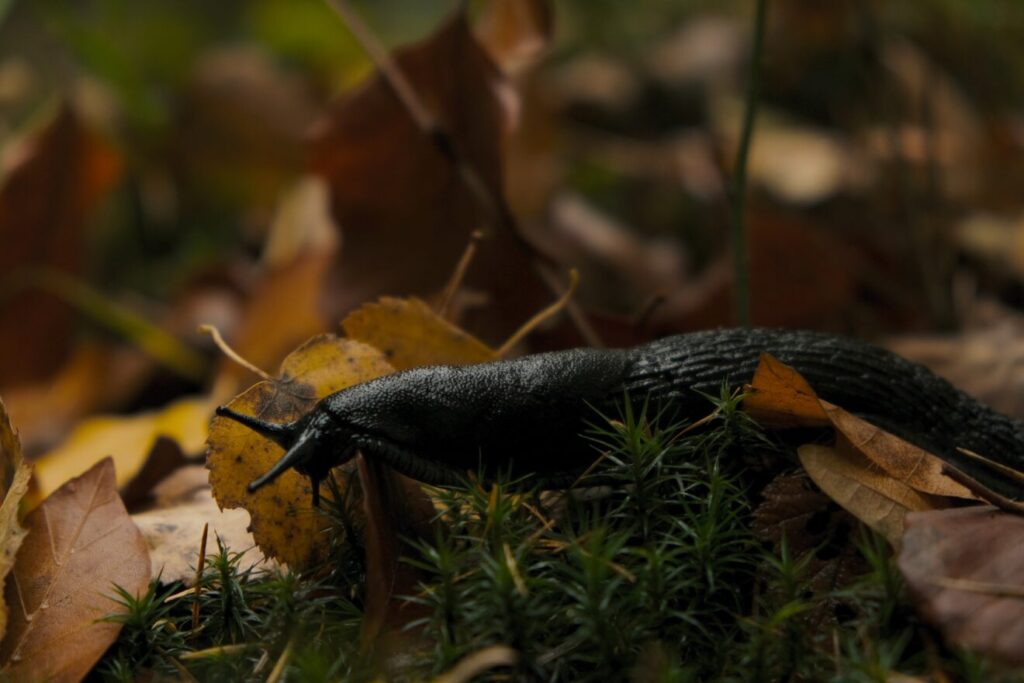
Conservation Status
Global: G5 (2016)
COSEWIC: NAR
Provincial: S4 (2018)
BC List: Yellow
Learn more about conservation status rankings here
Threats

Did You Know?
Species Account Author: Marcus Atkins
B.C. Conservation Data Centre. 2006. Species Summary: Thamnophis ordinoides. B.C. Minist. of Environment. Available: https://a100.gov.bc.ca/pub/eswp/ (accessed Jun 14, 2021).
B.C. Conservation Data Centre. 2011. Conservation Status Report: Thamnophis ordinoides. B.C. Minist. of Environment. Available: https://a100.gov.bc.ca/pub/eswp/ (accessed Jun 14, 2021).
B.C. Conservation Data Centre. 2021. BC Species and Ecosystems Explorer. B.C. Minist. of Environ. Victoria, B.C. Available: https://a100.gov.bc.ca/pub/eswp/ (accessed Jun 14, 2021).
Brodie III, E.D. 1993. Consistency of individual differences in anti-predator behaviour and colour pattern in the garter snake, Thamnophis ordinoides. Animal Behavior 45:851-861.
Gignac, A., and P.T. Gregory. 2005. The effects of body size, age, and food intake during pregnancy on reproductive traits of a viviparous snake, Thamnophis ordinoides. Ecoscience 12:236-243.
http://canadianherpetology.ca/species/species_page.html?cname=Northwestern%20Gartersnake
http://linnet.geog.ubc.ca/efauna/Atlas/Atlas.aspx?sciname=Thamnophis%20ordinoides&ilifeform=42
https://www.bcreptiles.ca/snakes/nw_garter.htm

